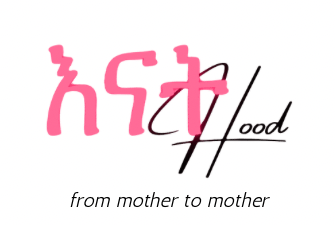
In my last three years of breastfeeding journey, I heard and have been challenged by many breastfeeding myths. This blog post aims to debunk ten common breastfeeding myths and provide evidence-based facts to support your breastfeeding journey. Let’s get started!
I hope you; mamas, find this information helpful in solving some of the breastfeeding problems and challenges. And will be empowered and encouraged you to continue breastfeeding.
1. Breastfeeding Myth: “Breastfeeding is Painful”
Fact: While some discomfort during the initial days is typical, breastfeeding should not be painful. Seek help from a lactation consultant to ensure proper latch and positioning.
Breastfeeding is a natural process that provides numerous benefits to the mother and the baby. However, many new moms may encounter the myth that breastfeeding is inevitably painful, leading to anxiety and reluctance to breastfeed.
It’s essential to understand that while some discomfort during the initial days is normal, breastfeeding should not be excessively painful. Let’s delve into the reasons behind this myth and debunk it with evidence-based facts.
Reasons for the Myth:
- Incorrect Latch: An improper latch is one of the most common reasons for painful breastfeeding. If the baby does not latch onto the breast correctly, it can lead to sore nipples and discomfort for the mother.
- Sensitivity: During the early days of breastfeeding, the mother’s nipples may feel sensitive as they adjust to the new experience. This sensitivity can sometimes be misinterpreted as pain.
- Engorgement: In the first few days after childbirth, the mother’s breasts may become engorged as the milk supply increases. Engorgement can lead to a feeling of tenderness. If not handled, it can lead to mastitis as well.
Engorgement was one of the challenges I faced in my breastfeeding journey’s early days. A WARM SHOWER IS THE BEST RELIEF while I wait for my body to adjust the milk supply to my baby’s demand.
- Nipple Issues: Some mothers may have pre-existing conditions such as inverted or flat nipples, which can cause challenges during breastfeeding and potentially contribute to discomfort. Keep reading; there are some tips to help below.
Debunking the Myth with Facts:
- Proper Latch and Positioning: A comfortable breastfeeding experience ensures proper latch and positioning.
A baby with a correct latch will effectively draw milk from the breast without causing pain or discomfort to the mother.
Seeking assistance from a lactation consultant or a certified breastfeeding counselor can help new moms master these techniques.
- Addressing Latch Issues: If a baby has trouble latching correctly, various techniques, such as using nipple shields or trying different breastfeeding positions, can improve the latch and minimize discomfort.
- Nipple Cream and Warm Compresses: Applying nipple cream or using warm compresses on sore nipples can provide relief and promote healing.
Make sure the nipple cream you use is from clean ingredients like this one. My favorite was applying coconut oil. Coconut oil’s anti-fungal property helps the cracked nipples from getting infected. Also, it is such a light oil to use on the breast.
However, persistent pain should not be ignored, and consulting a healthcare professional is crucial to rule out any underlying issues.
- Engorgement Management: Engorgement is a temporary condition that usually resolves as the milk supply regulates.
Encouraging frequent and practical nursing can help alleviate engorgement and ease discomfort.
- Nipple Care: Keeping the nipples clean and dry and allowing some air exposure can aid in preventing and managing soreness.
Moreover, it’s vital to recognize that while breastfeeding may involve some initial discomfort, persistent pain is not a normal part of the process.
Seeking help from a lactation consultant or a healthcare professional can make a significant difference in overcoming breastfeeding challenges.
Remember, every breastfeeding journey is unique, and with proper guidance and support, you can have a comfortable and rewarding experience while nourishing your baby with the best possible nutrition.
2. Breastfeeding Myth: “Formula is Just as Good as Breast Milk”
Fact: Breast milk provides essential nutrients and antibodies that formula can’t replicate. Breast milk offers optimal nutrition for your baby’s growth and development.
The debate between breastfeeding and formula-feeding infants has been ongoing for decades. One common myth is that formula is just as good as breast milk and can provide the same nutrition and benefits to the baby.
While formula can provide adequate nutrition to some extent, it is essential to understand the significant differences between breast milk and formula in terms of their composition and benefits.
Reasons for the Myth:
- Marketing and Advertising: Formula companies often engage in aggressive marketing campaigns that may suggest their products are equivalent to breast milk, leading some parents to believe that formula is just as good.
- Convenience: Formula feeding can be perceived as more convenient, allowing others to feed the baby and giving the mother more flexibility in her daily activities.
I believe breastfeeding is easier because it doesn’t require us to wash and sanitize bottles, doesn’t need a warmer, feeding at night or while traveling is a breath, has no packing, and needs extra planning.
More than the formula itself, I worry more about the cleanness of the water we mix with it. Especially while traveling and when we’re not in ideal situations or places. But breastfeeding is significantly more accessible and more convenient as it doesn’t require all of these.
- Lack of Information: Some parents may not be fully aware of the unique properties of breast milk and its benefits, leading them to assume that formula is a suitable substitute. Read በዚህ ሊንክ, where I explain in detail with research references about breast milk benefits for babies.

Debunking the Myth with Facts:
- Nutritional Composition: Breast milk is a complex and dynamic fluid that changes in composition to meet the specific nutritional needs of a growing baby.
It contains essential nutrients, vitamins, minerals, and optimally balanced enzymes to support the baby’s development.
Additionally, breast milk provides unique components like growth factors, stem cells, and immune-modulating agents, which formula cannot replicate.
- Immune Protection: One of the most significant advantages of breast milk is its ability to provide vital antibodies and immune factors.
These substances help protect the baby from infections and diseases, reducing the risk of illnesses and promoting a robust immune system.
This ጥናት shows just one month of breastfeeding reduces the chance of ear infections by 4%, and six months reduces ear infections by 17%.
- Digestibility: Breast milk is easily digestible by the baby’s immature digestive system, reducing the likelihood of digestive issues like constipation and reflux, which are more common with formula feeding.
- Bonding and Emotional Benefits: Breastfeeding fosters a unique bond between the mother and baby through skin-to-skin contact and eye contact during nursing sessions.
This bonding experience can have positive effects on the baby’s emotional development.
- Reduced Risk of Health Conditions: Breastfeeding has been associated with a lower risk of various health conditions for both the baby and the mother, such as respiratory infections, allergies, asthma, obesity, diabetes, and certain types of cancer.
- Cost and Environmental Impact: Breastfeeding is cost-effective, requiring no additional expenses for purchasing formula or bottles.
Moreover, it has a minimal environmental impact compared to the production and disposal of formula containers.
While formula can be a suitable alternative in specific situations, it is essential to acknowledge the unique benefits of breast milk. Breastfeeding provides optimal nutrition, immune protection, and emotional bonding, supporting the baby’s overall health and development.
It is recommended that mothers exclusively breastfeed their babies for the first six months of life and continue breastfeeding alongside appropriate complementary foods for at least one year, as per guidelines from organizations such as the World Health Organization (WHO) and the American Academy of Pediatrics (AAP).
However, every mother’s situation is unique, and if breastfeeding is not possible, seeking advice from healthcare professionals to choose an appropriate formula is crucial for the baby’s well-being.
3. Breastfeeding Myth: “Breastfeeding Makes Your Breasts Sag”
Fact: Breastfeeding does not cause breast sagging. Factors like age, genetics, and weight fluctuations impact breast shape more.
Breast sagging, also known as breast ptosis, is a common concern among women, and there is a persistent myth that breastfeeding is the leading cause of this condition.
Many believe that breastfeeding causes the breasts to lose their shape and firmness. However, research and medical experts have debunked this myth, and it’s essential to understand the fundamental factors contributing to breast sagging.
Reasons for the Myth:
- Misconceptions and Cultural Beliefs: Breastfeeding has been erroneously associated with breast sagging for generations, perpetuating the myth in various cultures.
- Lack of Awareness: Some individuals may not be fully informed about the natural changes in a woman’s body during pregnancy and the aging process, leading them to attribute breast sagging solely to breastfeeding.
Debunking the Myth with Facts:
- Natural Changes During Pregnancy: Breast sagging is a natural process that can occur during pregnancy and beyond.
During pregnancy, the breasts undergo significant changes to prepare for breastfeeding, including enlargement and increased blood flow.
After childbirth, as the milk-producing glands shrink, the breasts may return to their pre-pregnancy size, and this fluctuation can contribute to the perception of sagging.
- Age and Genetics: The most significant factors influencing breast sagging are age and genetics. As women age, the skin loses elasticity, and the supportive ligaments in the breast tissue can weaken.
Additionally, genetics play a crucial role in determining breast shape and how susceptible an individual is to breast sagging.
- Weight Fluctuations: Rapid weight gain and loss can also impact breast shape. Significant weight fluctuations can stretch the skin and lead to a loss of breast firmness.
- Number of Pregnancies: The number of pregnancies a woman has experienced can contribute to breast sagging. Multiple pregnancies can further stretch the breast tissue, increasing the likelihood of sagging.
- Wearing Supportive Bras: Wearing a properly fitted and supportive bra during pregnancy and breastfeeding can help reduce strain on breast tissue and provide better support.
- Lifestyle Factors: Smoking, excessive sun exposure, and poor nutrition can contribute to premature skin aging and, indirectly, breast sagging.
Breastfeeding does not cause breast sagging. The natural changes during pregnancy, age, genetics, and lifestyle factors, significantly impact breast shape and firmness.
Breastfeeding itself is not to blame for breast ptosis. Instead, it is a beautiful and essential act that provides numerous benefits for both the mother and the baby.
While breast sagging may concern some women, embracing the changes that come with motherhood and taking care of overall health can help maintain breast health and appearance over time.
4. Breastfeeding Myth: “You Must Follow a Strict Diet While Breastfeeding”
Fact: A balanced diet is essential, but you don’t need to restrict specific foods. Enjoy a variety of foods while ensuring proper hydration.
During the postpartum period, many new mothers are bombarded with advice and suggestions about their diet while breastfeeding. There is a common myth that new mothers must adhere to a strict and specific diet to ensure the health and well-being of their babies.
This misconception can lead to unnecessary stress and anxiety for breastfeeding moms. In reality, while a balanced diet is crucial for maintaining optimal health, there is no need for extreme dietary restrictions while breastfeeding.
Reasons for the Myth:
- Concern for Baby’s Health: Mothers naturally want the best for their babies and may believe that following a strict diet will guarantee the highest quality of breast milk.
- Influence of Old Wives’ Tales: Traditional beliefs and cultural practices passed down through generations may perpetuate the idea that certain foods should be avoided to prevent issues with breastfeeding or the baby’s health.
Debunking the Myth with Facts:
- Breast Milk Adaptability: Breast milk is an amazing and adaptable substance that changes based on the mother’s diet and the baby’s needs. Even if a mother occasionally consumes certain foods that might be considered “unhealthy,” her breast milk will still provide the necessary nutrients for her baby’s growth and development.
- Moderation is Key: Rather than strict dieting, the focus should be on maintaining a well-balanced and varied diet. Including a wide range of foods ensures that both the mother and the baby receive all the essential nutrients they need.
- Nutrient-Rich Foods: While there are no specific foods that must be avoided, breastfeeding mothers need to prioritize nutrient-rich foods such as fruits, vegetables, whole grains, lean proteins, and healthy fats.
These foods provide diverse vitamins and minerals necessary for the baby’s growth and the mother’s overall health.
- Adequate Hydration: Staying adequately hydrated is crucial for breastfeeding mothers. Drinking enough water helps ensure a healthy milk supply and supports the mother’s well-being.
- Indulgence in Moderation: It is perfectly fine for breastfeeding moms to enjoy occasional treats or foods they love. A well-rounded approach to nutrition allows for flexibility and enjoyment without compromising the quality of breast milk.
- Common Sensitivities: Some babies may show signs of discomfort or allergies in response to certain foods that pass through breast milk.
If you notice any specific sensitivities in your baby, you can work with a healthcare provider to identify potential triggers and adjust your diet accordingly.

In conclusion, there is no need for breastfeeding mothers to follow a strict diet. A balanced and varied diet and proper hydration are essential for maintaining the mother’s health and supporting the baby’s growth and development.
5. Breastfeeding Myth: “Small Breasts Produce Less Milk”
Fact: Breast size does not determine milk production. Milk supply is based on demand, and proper breastfeeding techniques are crucial for ample milk production.
Regarding breastfeeding, there is a common myth that women with small breasts may produce less milk than those with larger breasts.
This misconception can lead to unnecessary worry and anxiety for new mothers, as they may fear that their breast size could affect their ability to provide enough milk for their babies.
However, the fact is that breast size does not determine milk production, and women with small breasts can produce just as much milk as those with larger breasts.
Reasons for the Myth:
- Appearance and Stereotypes: The myth may stem from societal perceptions and stereotypes associating larger breasts with greater fertility and breastfeeding capability.
- Lack of Information: Some individuals may not be fully informed about the physiological mechanisms of milk production, leading them to believe that breast size is directly linked to milk supply.
Debunking the Myth with Facts:
- Mammary Gland Structure: Breast size is primarily determined by the amount of adipose tissue (fat) in the breasts, not by the number of milk-producing glands. The number of milk-producing glands is similar in women with small and large breasts. Therefore, breast size does not impact a woman’s ability to produce milk.
- Milk Production and Demand: Milk production is a supply-and-demand process. The more frequently a baby nurse or milk is expressed through pumping, the more milk the body will produce to meet the baby’s needs. Consistent and effective breastfeeding sessions signal the body to supply adequate milk.
- Proper Breastfeeding Techniques: Proper breastfeeding techniques are fundamental to successful breastfeeding and ensuring an ample milk supply. Providing a correct latch and positioning can help the baby effectively extract milk from the breast, stimulating milk production.
- Frequency and Duration of Feeds: Frequent nursing sessions and allowing the baby to nurse for as long as they want at each feeding can help maintain and increase milk supply. Babies have different feeding patterns; some may need to nurse more frequently than others.
- Listening to Baby’s Cues: Understanding and responding to the baby’s hunger cues is essential for successful breastfeeding. When the baby is allowed to nurse on-demand, it helps establish a healthy breastfeeding relationship and ensures the baby gets enough milk.
Breast size does not determine milk production. The number of milk-producing glands in the breasts is similar in women with small and large breasts.
Breastfeeding success and milk supply depend on proper breastfeeding techniques, frequent and effective nursing, and listening to the baby’s cues.
New mothers must understand that their breast size does not affect their ability to produce enough milk for their baby’s needs. Seeking support from lactation consultants, joining breastfeeding support groups, and working with healthcare professionals can help new mothers navigate their breastfeeding journey confidently and successfully.
Remember, every woman’s breastfeeding experience is unique, and with the proper knowledge and support, mothers can provide their babies with the best nourishment and care, regardless of breast size.
6. Breastfeeding Myth: “You Can’t Breastfeed if You Have Flat or Inverted Nipples”
Fact: Most women with flat or inverted nipples can breastfeed successfully. Lactation experts can offer techniques to assist with latching.
One of the common myths surrounding breastfeeding is that women with flat or inverted nipples cannot breastfeed successfully.
This misconception can lead to anxiety and uncertainty for expectant mothers, who may fear not being able to provide their babies with the benefits of breastfeeding.
However, the fact is that most women with flat or inverted nipples can breastfeed successfully with the right support and techniques.
Reasons for the Myth:
- Lack of Awareness: Some women may not know the different nipple shapes and how they can impact breastfeeding. Lack of information can lead to assumptions that flat or inverted nipples are a barrier to breastfeeding.
- Cultural Beliefs: In some cultures, traditional beliefs or myths may perpetuate the idea that flat or inverted nipples hinder breastfeeding.
Debunking the Myth with Facts:
- Nipple Variations: Nipples come in various shapes and sizes, including flat, inverted, and protruding. These variations are normal and do not indicate an inability to breastfeed.
- Breastfeeding Success: Most women with flat or inverted nipples can breastfeed. The ability to breastfeed is not solely determined by nipple shape; it depends on factors such as milk supply, baby’s latch, and breastfeeding support.
- Techniques for Latching: Lactation experts, such as certified lactation consultants, can offer valuable support and techniques to assist with latching when dealing with flat or inverted nipples. A proper latch is crucial for effective milk transfer and a comfortable breastfeeding experience.
- Breastfeeding Aids: There are specialized breastfeeding aids available, such as nipple shields, which can help babies latch onto flat or inverted nipples more easily. However, using such aids should be done under the guidance of a lactation expert to avoid potential issues.
- Skin-to-Skin Contact: Initiating skin-to-skin contact with the baby immediately after birth can encourage instinctive breastfeeding behavior and help latch.
- Breast Pump Use: In some cases, using a breast pump before breastfeeding can help draw out flat or inverted nipples, making it easier for the baby to latch.
- Persistence and Support: Patience, persistence, and the support of a lactation expert or breastfeeding counselor can significantly contribute to breastfeeding success.
Remember that breastfeeding is a learned skill for both the mother and the baby, and with patience, support, and the right resources, you can have a rewarding and fulfilling breastfeeding journey.
7. Breastfeeding Myth: “Breastfeeding Prevents Conception”
Fact: While breastfeeding can delay ovulation, it is not a reliable contraception. Consult your doctor for appropriate birth control options.
Breastfeeding has long been associated with a natural method of birth control, leading to the myth that breastfeeding can prevent conception entirely. This belief has been known as the “Lactational Amenorrhea Method” (LAM). While breastfeeding can delay ovulation for some women, it is not a reliable or foolproof contraception. Relying solely on breastfeeding as a birth control method can lead to unplanned pregnancies, so new mothers must be aware of the facts and consider other c options.
Reasons for the Myth:
- Historical Practices: Before the availability of modern contraceptive methods, breastfeeding was often relied upon as a means of natural birth control due to its potential to suppress ovulation.
- Lack of Ovulation Signs: Some breastfeeding women may not experience regular periods, leading them to believe they are not ovulating and, therefore, cannot conceive.
Debunking the Myth with Facts:
- Lactational Amenorrhea Method (LAM): The LAM is a practice where exclusive breastfeeding, including frequent nursing day and night, helps suppress ovulation in some women. This method can be effective for a limited time under specific conditions.
- Individual Variation: The effectiveness of LAM varies from woman to woman. Some women may resume ovulation and menstruation sooner than others, even with exclusive breastfeeding.
- Introducing Complementary Foods: The likelihood of ovulation returning increases as the baby starts eating solid foods, reducing breastfeeding sessions.
- Unpredictable Ovulation: Ovulation can occur before the first postpartum period or without any noticeable signs, making it difficult to rely solely on breastfeeding as a contraceptive method.
- Exclusive Breastfeeding Criteria: For LAM to be somewhat effective, specific criteria must be met, including exclusive breastfeeding (no formula or solid foods) and nursing at least every 4 hours during and every 6 hours at night. These conditions can be challenging to maintain consistently.
- Health Risks: Relying solely on breastfeeding for birth control carries potential risks, such as unintended pregnancies and inadequate spacing between pregnancies.
Consult Your Doctor for Appropriate Birth Control Options:
Given the variability in how breastfeeding affects ovulation and fertility, new mothers need to consult their healthcare provider to discuss appropriate birth control options.
Various contraceptive methods are available, and the choice will depend on individual health factors and preferences.
Breastfeeding can delay ovulation for some women, but it is not a reliable contraception.
Relying solely on breastfeeding as birth control can lead to unintended pregnancies. New mothers must be informed about the potential risks and consult with their healthcare provider to choose an appropriate and effective birth control method that aligns with their family planning goals.
By understanding the facts and taking proactive measures, women can make informed decisions about their reproductive health and family planning.
8. Breastfeeding Myth: “Babies Should Be on Strict Feeding Schedules”
Fact: Breastfed babies thrive on demand-based feeding. Let your baby’s hunger cues guide your feeding schedule.
There is a common myth that babies, especially breastfed ones, should be put on strict feeding schedules with predetermined intervals between feeds.
This belief may be influenced by outdated practices or cultural norms that suggest rigid feeding routines. However, the fact is that breastfed babies thrive on demand-based feeding, where the baby’s hunger cues guide the feeding schedule.
I breastfed my children on demand and never had issues.
Reasons for the Myth:
- Historical Practices: In the past, rigid feeding schedules were more common, and this belief may still linger in some communities.
- External Influences: Well-meaning advice from friends, family, or outdated sources might suggest following strict feeding schedules.
- Misinterpretation: Some babies may have predictable patterns in the early weeks, which can be mistaken as a sign to impose a strict feeding schedule.
Debunking the Myth with Facts:
- Baby-Led Feeding: Demand-based feeding, also known as baby-led feeding, is the recommended approach for breastfeeding infants.
It involves feeding the baby whenever they show signs of hunger, such as rooting, sucking on their fingers, making mouthing movements, or crying.
- Hunger Cues: Babies are born with an innate ability to regulate their feeding needs. Trying to impose a rigid schedule can disrupt this natural process and lead to feeding difficulties and inadequate weight gain.
- Supply and Demand: Breast milk production works on a supply-and-demand basis. Frequent and practical stimulates the breasts to produce enough milk to meet the baby’s needs.
- Growth Spurts: Babies often go through growth spurts, which they may want to nurse more frequently to support their rapid growth and development. A flexible feeding schedule allows the baby to get the extra nourishment they need during these times.
- Comfort and Bonding: Breastfeeding provides more than just nutrition. It offers comfort, warmth, and emotional bonding between the baby and the mother. Following a strict feeding schedule might deprive the baby of these essential aspects of breastfeeding.
- Maturing Feeding Patterns: Their feeding patterns naturally evolve as babies grow. They tend to develop more predictable feeding routines over time, which should still be based on their needs and cues.
Breastfed babies thrive on demand-based feeding, fed whenever they show signs of hunger. Following the baby’s hunger cues is essential for establishing a healthy breastfeeding relationship, ensuring an adequate milk supply, and supporting the baby’s growth and development.

A flexible and responsive approach to feeding is more likely to meet the baby’s nutritional and emotional needs while promoting a positive and nurturing breastfeeding experience.
As a parent, trusting your baby’s instincts and being attentive to their cues can lead to a harmonious and fulfilling breastfeeding journey.
9. Breastfeeding Myth: “Pumping is the Same as Breastfeeding”
Fact: While pumping can be helpful, direct breastfeeding has additional benefits, such as skin-to-skin contact and tailored milk supply.
With the increasing popularity of breast pumps, there is a prevalent myth that pumping breast milk is equivalent to direct breastfeeding. While pumping can be a valuable tool for providing breast milk to the baby, the fact is that natural breastfeeding offers unique benefits that pumping alone cannot replicate.
Reasons for the Myth:
- Convenience: Pumping allows mothers to store breast milk and have others feed the baby, offering convenience and flexibility.
- Feeding Alternatives: Some mothers prefer to pump and feed the baby from a bottle rather than breastfeeding directly.
- Time and Schedule Management: Pumping can provide more control over feeding schedules and allow mothers to plan their day accordingly.
Debunking the Myth with Facts:
- Skin-to-Skin Contact: One of the significant benefits of direct breastfeeding is the skin-to-skin contact between the baby and the mother.
This intimate contact has various advantages, including promoting bonding, regulating the baby’s body temperature, and supporting the emotional well-being of both mother and baby.
- Tailored Milk Supply: When the baby breastfeeds directly, the mother’s body adjusts the milk supply based on the baby’s specific needs.
Breast milk changes composition from feeding to feeding, adapting to the baby’s age, developmental stage, and health status.
- Immune Protection: Direct breastfeeding provides the baby with essential antibodies and immune factors that help protect against infections and illnesses. When the baby breastfeeds directly, these protective elements are in higher quantities in breast milk.
- Suckling Stimulates Milk Production: The baby’s suckling at the breast stimulates milk production through a hormonal response, ensuring an adequate milk supply.
- Breast Drainage: Direct breastfeeding allows for more effective breast drainage, which is crucial for maintaining milk supply and preventing issues like engorgement and blocked milk ducts.
- Baby’s Oral Development: Breastfeeding helps in the natural development of the baby’s jaw, facial muscles, and oral coordination, which may not be entirely replicated with bottle feeding.
- Nipple Stimulation: Direct breastfeeding involves nipple stimulation, which releases oxytocin, the hormone responsible for milk ejection. This hormone release helps promote bonding and relaxation for both mother and baby.
While pumping breast milk can be a valuable tool for providing breast milk to the baby, direct breastfeeding offers unique benefits beyond just providing nutrition.
Skin-to-skin contact, tailored milk supply, immune protection, and the baby’s natural oral development are some of the crucial advantages of breastfeeding directly.
Mothers must find what works best for them and their babies, whether direct breastfeeding, pumping, or a combination of both. Understanding the distinct advantages of each method can help mothers make informed decisions to ensure a positive and nurturing feeding experience for both themselves and their babies.
10. Breastfeeding Myth: “You Should Stop Breastfeeding When Your Baby Starts Teething”
Fact: Teething may cause some temporary discomfort, but breastfeeding can continue. Gentle guidance and using teething aids can help ease the process.
Teething is a significant developmental milestone that can be accompanied by discomfort and irritation for both the baby and the mother.
However, a common myth suggests that breastfeeding should be stopped when the baby starts teething. In reality, breastfeeding can continue throughout the teething process and even provide comfort and relief to a baby.
Reasons for the Myth:
- Misinformation: Some caregivers or family members may not be familiar with the benefits of breastfeeding during teething and may mistakenly believe that it should be discontinued to prevent potential issues.
- Concern for Mother’s Comfort: Teething babies may occasionally bite while breastfeeding, leading to fears of discomfort for the mother.
Debunking the Myth with Facts:
- Comfort and Soothing: Breastfeeding can be soothing and comforting for a teething baby. The suckling can relieve the discomfort of teething and emotional reassurance during this new experience.
- Nutritional Value: Breast milk remains an essential source of nutrition for babies throughout the teething process. It provides the necessary nutrients for growth and development while the baby transitions to solid foods.
- Hydration: Breast milk is an excellent way to keep a teething baby hydrated, especially when they may be less interested in drinking water during this time.
- Proper Latch and Response: With gentle guidance, a teething baby can be taught not to bite while breastfeeding. A simple and gentle response, such as breaking the latch and calmly saying “no,” can help discourage the behavior if the baby does bite.
- Teething Aids: There are various teething aids available, such as teething rings or soft cloths, that can be given to the baby to chew on before breastfeeding. This can help soothe sore gums and reduce the likelihood of biting while nursing.
- Breast Milk Properties: Breast milk has natural anti-inflammatory properties, which can help alleviate discomfort associated with teething.
- Temporary Discomfort: Teething discomfort is generally temporary and varies among babies. Continuing breastfeeding can provide comfort and support during this challenging period.
Breastfeeding can and should continue when your baby starts teething. Breast milk remains an essential source of nutrition and comfort for teething babies.
With gentle guidance and using teething aids, potential issues, such as biting while nursing, can be managed effectively. Breastfeeding can be a valuable tool to soothe a teething baby and provide emotional support during this milestone.
If you have concerns about teething or breastfeeding, consulting with a pediatrician or a certified lactation consultant can provide valuable guidance and support to ensure a positive and rewarding breastfeeding experience for you and your baby.
Armed with the facts, you can confidently navigate through the myths surrounding breastfeeding. Remember, each breastfeeding journey is unique, and seeking support from healthcare professionals and experienced moms can be incredibly valuable. Embrace the journey and cherish the special bond with your little one. Happy breastfeeding!
Is there any other breastfeeding myth you heard ? Let me know in the comment box below.


 የእናቶች ታሪክ በአለም ዙሪያ – ረቂቅ አዕምሮ ከዳላስ (Mother’s Stories Around the World)
የእናቶች ታሪክ በአለም ዙሪያ – ረቂቅ አዕምሮ ከዳላስ (Mother’s Stories Around the World)
Leave a Reply